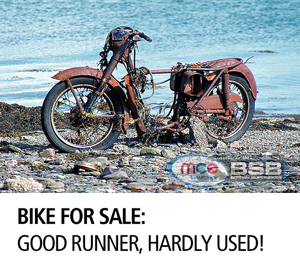Top 10 tips when buying a second hand bike

With the current economic climate in the UK looking gloomy, and no sign that it's going to get better anytime soon, more and more riders are turning to buy second hand bikes as opposed to brand new ones. Here is a handy guide to make sure that what you are buying is safe, worth the money you are paying and ultimately a sound investment.
1. Bodywork - Pretty straight forward - poorly colour matched panels can indicate crash damage so check the bike thoroughly for any hidden damage or discolouration.
2. Wheels - Heavily scratched rims are a good indication of frequent tyre changes - common in racing bikes. Check this because if a bike has been used for racing or track days then you may not get the lifespan you want out of it.
3. Chain and Sprockets - A clean chain and fresh sprockets is ideally what you are looking for. A worn chain indicates a hard life and a rusty chain means neglect. Simple but a lot of people miss it.
4. Engine and Chassis Numbers - Absolutely must match the log book!
5. Handle Bars - Be sure to check for bending of handle bars.
6. Keys - Make sure you have 2 sets of keys, if there is a spare make sure it fits the ignition, the tank and the seat. If this does not happen then it's a sign the bike may have been stolen.
7. Brake Discs - Check for excessive wear and grooves. Also check that they match. If damaged, you can easily replace them but make sure you knock the money off the asking price!
8. Tyres - A considerate seller will have matching tyres with plenty of miles left in them. The state of the tyres is a great indication of how it has been ridden, i.e frazzled edges indicates a track day fiend, and squared off tyres could mean a lot of motorway riding so this is worth taking note of.
9. Brake pads - This is very important, do NOT buy if you know they are worn or not in top condition. This could cause a host of problems if they are not up to the correct standard.
10. Engine - Check for rattles, noises etc. and start the engine from cold to see how healthy it sounds. Make sure nothing looks suspiciously new in terms of nuts, bolts or filter plugs. If there is then don't be afraid to ask why. Finally, make sure the temperature gauge is working OK.
29.09.12 - Big Ed





